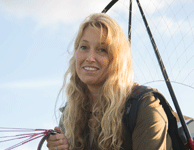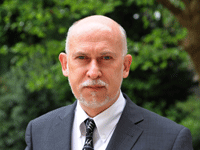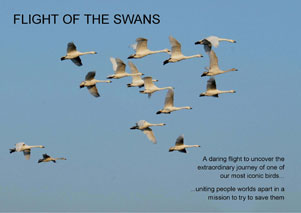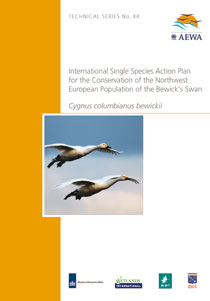This autumn, an extraordinary awareness-raising campaign will track the Bewick’s Swan (Cygnus columbianus bewickii) on its migration route from the Russian Arctic to Britain. The so called “Flight of the Swans” expedition hopes to uncover new science and help raise awareness about these graceful waterbirds, whose population numbers have halved over the past 20 years.
Led by the Wildfowl and Wetlands Trust (WWT) in cooperation with a number of international partners, the campaign will see conservationist Sacha Dench flying over 7,000 km, thereby crossing 11 countries together with the Bewick’s Swans on its migration route. The paramotorist will be using just a parachute wing with a small propeller engine strapped to her back.
On the way, Dench will face many of the same challenges as the migrating swans, from extreme weather to a hostile landscape of pylons and tall buildings, as well as struggling to find safe places to land, rest and refuel. She will film and make live broadcasts along the way. It will be the first time anyone has attempted to follow Bewick’s Swans on their annual migration.
Sacha Dench
“This expedition is very close to my heart,” said Dench. “It is a chance to learn more about Bewick’s swans and why they’re declining. But just as important, it’s a chance to bring people from very different cultures together – because the swans’ fate rests in our hands.” “We can’t let the Bewick’s swan population’s decline continue for another decade,” Sacha added.
“The idea formed as I realised that many of my paramotoring contacts in Europe were also farmers and hunters – two groups that are crucial to the swans’ survival. This adventure seemed the perfect way to spark the interest of people on the ground.”
“Wherever you land as a paramotorist, whoever is nearby is understandably curious to know where you’ve come from and why. I will be using that interest to tell people the swans’ story and to invite everyone I meet – from reindeer hunters to town planners – to get involved in helping them to survive.”
The north-west European population of the Bewick’s Swan has declined by 40 per cent since the mid-1990s due to many different factors such as impacts of climate change, changing land-use, illegal and accidental shooting as well as lead poisoning across the range of the bird’s migration.
In 2012, as the numbers of Bewick’s Swans reached an alarmingly low level, an international action plan was agreed by countries that lie beneath the birds’ migration path. Dench’s expedition is the culmination of that effort.
The expedition will help to raise awareness for the plight of the Bewick’s Swan and will try to stimulate support for its conservation among a wide audience, including local people, hunters, farmers, conservation organizations, authorities, decision-makers and the wider public.

Jacques Trouvilliez, Executive Secretary UNEP/AEWA Secretariat
“Flight of the Swans is not only likely to be a ground-breaking expedition revealing the extraordinary journey of one of AEWA’s iconic species, it will also be an excellent example of a flyway-scale awareness raising campaign, which will help to stimulate conservation action and international cooperation for the Bewick's Swan,” said Jacques Trouvilliez, Executive Secretary of AEWA. “If successful, it will also be beneficial to many other AEWA species and may even become a model for similar future initiatives across the African-Eurasian Flyway” added Trouvilliez.
Follow the links below to find out more about the Flight of the Swans project:
- AEWA news article on the "Flight of the Swans" campaign: http://www.unep-aewa.org/en/news/new-flyway-campaign-highlight-plight-swans
- Official Website of the expedition "Flight of the Swans": https://www.flightoftheswans.org/
- Short visual summary of the campaign: http://www.unep-aewa.org/sites/default/files/flight_of_the_swans_introduction.pdf
- AEWA International Single Species Action Plan (ISSAP) for the Bewick's Swan: http://www.unep-aewa.org/sites/default/files/publication/ts44_ssap_bewicks_swan.pdf
- Wildfowl and Wetlands Trust (WWT) Waterbird Monitoring: http://monitoring.wwt.org.uk/our-work/goose-swan-monitoring-programme/species-accounts/bewicks-swan/
- Twitter: https://twitter.com/WWTSwanFlight
International Single Species Action Plan for the Bewick's Swan
The International Single Species Action Plan (ISSAP) for the Bewick’s Swan, which has been adopted by AEWA in 2012, aims to reverse the decline of the Northwest European population of these waterbirds and return the species to a favourable conservation status.




